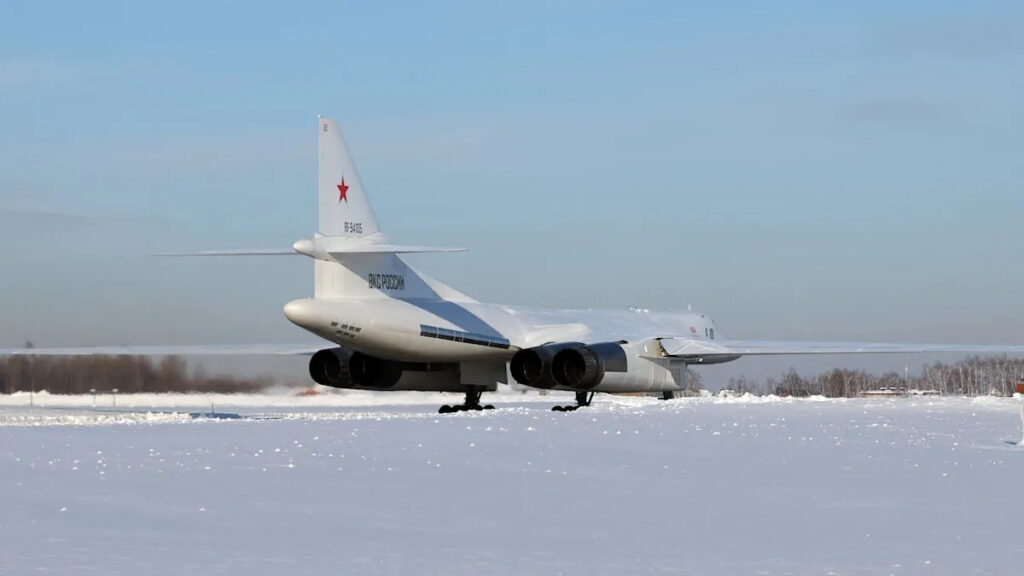
A series of explosions at airbases deep within Russia on June 1, 2025, has sent shockwaves through Moscow’s military strategy. The Ukrainian operation, dubbed “Operation Spider Web,” targeted the core of Russia’s strategic bombing capabilities, challenging the long-held belief that bases far behind the front lines are invulnerable. This unprecedented strike offers smaller militaries a new blueprint for countering larger nations’ airstrike capabilities.
Ukraine’s audacious plan involved 117 remote-controlled drones, smuggled into Russia over 18 months, and launched by operators stationed miles away. The raid resulted in the destruction or damage of over 40 Tu-95, Tu-160, and Tu-22 M3 strategic bombers, along with an A-50 airborne-early-warning jet, according to Kyiv officials. This represents about one-third of Russia’s long-range strike fleet, amounting to approximately $7 billion in military hardware. Even if later satellite imagery adjusts these figures, the extent of the damage remains significant.
Strategic Implications of the Strike
The logic behind this strike is difficult to overlook. Modern military campaigns typically focus on depth, with nations building combat power in relatively safe “rear areas” — logistics hubs located far from the front lines. These are the places where new military units form, and long-range bombers, like those destroyed in the Ukrainian operation, are stationed.
Since the 2022 invasion of Ukraine, the Kremlin has relied heavily on its deep-rear bomber bases, some over 2,000 miles from the Ukrainian front. This strategy has been paired with waves of Iranian-designed Shahed attack drones to maintain constant pressure on Ukrainian cities.
“The Russian theory of victory is brutally simple: coercive airpower. If missiles and one-way drones fall on Kyiv often enough, civilian morale in Ukraine will crack,” military analysts have noted.
For Kyiv’s military planners, targeting these launch platforms is a cost-effective strategy compared to intercepting every incoming missile, which has so far achieved an 80% success rate but relies heavily on dwindling Western-donated equipment.
Historical Parallels and Military Tactics
Airfields have always been critical targets in warfare, as grounded aircraft are more vulnerable and easier to destroy. Historical examples abound, such as the United Kingdom’s Special Air Service jeep raids in North Africa during World War II, which destroyed an estimated 367 enemy aircraft, and the German seizure of airstrips on Crete, which shifted the balance in the island campaign.
In Vietnam, Viet Cong and North Vietnamese Army teams repeatedly penetrated U.S. perimeters, destroying aircraft and forcing the diversion of American soldiers to base security. The underlying strategy of targeting aircraft on the ground remains effective, imposing significant costs on the targeted military.
“Every runway cratered and every bomber torched obliges the military hit to pour money into ways to frustrate such attacks,” military historians explain.
The Rise of Drone Warfare
Operation Spider Web taps into a distinctly 21st-century aspect of warfare: unmanned drone operations. Drones operate in “air littorals,” the atmospheric layer above ground forces but below the altitude of traditional aircraft, where they can bypass most defenses and incapacitate strategic targets.
By deploying small drone launch teams close to Russian runways, Ukraine created surprise launchpads, catching the enemy off guard. Economically, Ukraine’s approach is starkly advantageous. While a drone costs under $3,000, a Russian Tu-160 bomber costs around $250 million.
Consequences for Russia
Operation Spider Web will have immediate and costly repercussions for Russia. Surviving bombers will need relocation, and protecting bases from future attacks will require significant investment in defenses, diverting resources from the front lines.
“Losing a dozen Tu-95 and Tu-160 aircraft, which serve as nuclear-capable bombers, is strategically embarrassing and may force the Kremlin to reconsider long-range patrols,” defense experts suggest.
Beyond the physical and financial damage, Ukraine’s operation delivers a potent psychological blow, demonstrating its capability to conduct sophisticated operations deep within Russian territory. The meticulous planning involved in smuggling, assembling, and deploying the drones underscores Ukraine’s strategic acumen.
A New Front Line in Warfare
For Ukraine, this operation presents a repeatable strategy for targeting deep, well-defended assets. The same tactics could be adapted to strike missile depots and factories producing Shahed drones, which have become a significant threat.
The implications extend beyond the Russia-Ukraine conflict, challenging the notion that rear areas are safe. Inexpensive drones, launched from within enemy territory, have the potential to neutralize costly military assets, a strategy that could be adopted by other nations.
“Air forces relying on large, fixed bases must either harden, disperse, or accept that their runway is a new front line,” military strategists warn.
This article is republished from The Conversation, a nonprofit, independent news organization. It was written by Benjamin Jensen, American University School of International Service.







